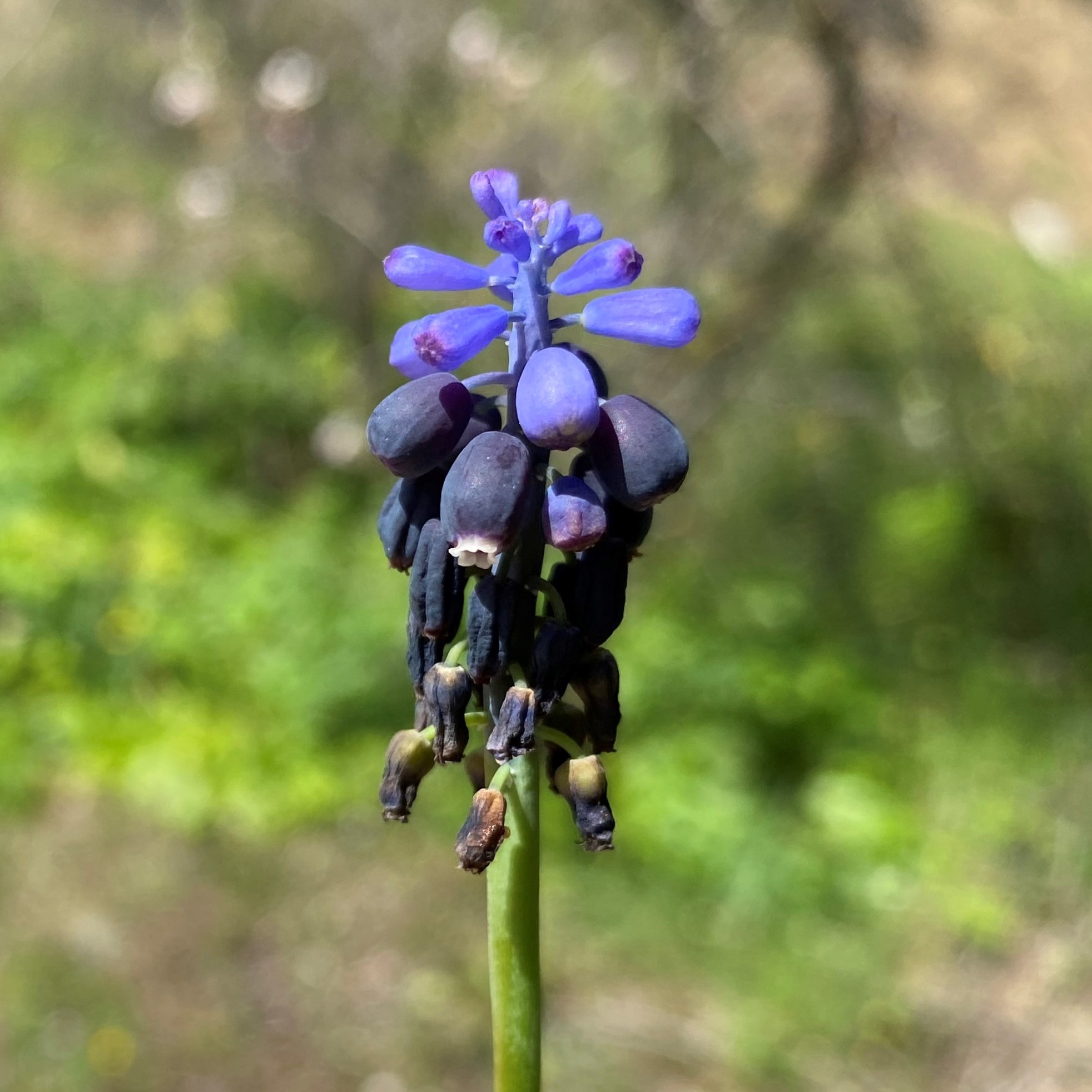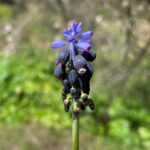Μουσκάρι το αμελητέο
Etymology of Muscari neglectum: The name of the genus, Muscari, comes from the Greek word "μόσχος" [moschos] for "musk", referring to the scent produced by the flowers of many species in the genus. "Neglectum" in Latin means "having been neglected/ignored/overlooked", referring to unnoticeable presence.
At least four Muscari taxa, all species, have been found so far in Cyprus' nature.
Muscari neglectum is a less common plant compared to the other three taxa of the genus encountered in Cyprus, and it exists all around Cyprus except for the Karpasia peninsula and northern Cyprus, at an altitude between 50-600 metres. It blooms from February until March only.
How to identify Muscari neglectum:
Among the four species that exist in the Cypriot habitat, Muscari comosum is easy to distinguish from the others. Regarding the other three, Muscari inconstrictum's flowers appear between December and March, and its perianth is dark blue or violet. The same happens with Muscari neglectum. The difference between these two is that Muscari inconstrictum's perianth-lobes are concolourous with the tube, dark indigo or violet; the tube is not (or indistinctly) constricted at the apex, and its leaves are 1-3 mm wide. On the contrary, Muscari neglectum's perianth-lobes are white or whitish; its perianth-tube is dark blue, constricted at the mouth, and its leaves are 1.5-6 mm wide. Simply put their basic difference, those little "bells'" opening has white colour for neglectum, whilst for inconstrictum the color is the same as the flower, dark.


